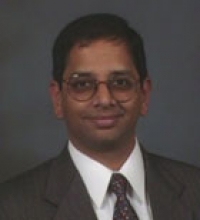MAE Seminar: Low-order Modeling of Unsteady Airfoil and Wing Aerodynamics Dominated by Leading-edge Vortex Shedding

Department of Mechanical and Aerospace Engineering
North Carolina State University
Abstract: Theoretical and low-order methods for steady, attached flows past wings and configurations have, for many decades, been key enablers for the vast improvements in aerospace technology. For unsteady, separated flows past airfoils and wings at high angles of attack undergoing large-amplitude and high-frequency motions, the situation is considerably different. Aerodynamic characteristics such as large-scale flow separation and time-dependent vortex shedding cause significant challenges in the development of fast, low-order prediction methods for such cases. Such flow situations are routinely encountered in a range of applications including aircraft at post-stall conditions, rotorcraft, agile micro-air vehicles, ground vehicles, yachts, wind-power devices and natural flight. While high-order computational fluid dynamics (CFD) methods have enabled us to analyze these flows, the high computational costs prevent their routine use in rapid design scenarios, simulation and control. This seminar will present the ongoing development of fast low-order methods at NC State for high-intensity unsteady flows past airfoils and wings with time-dependent vortex shedding encountered in flapping flight, micro-air vehicles, rotorcraft and wind-powered devices. Of particular interest is the role of the leading-edge suction on the modulation of vortex shedding from rounded leading edges. Our research shows that, at low Reynolds numbers (around 10,000), there is a critical value of leading-edge suction that govern the initiation, growth and termination of leading-edge vortex (LEV) shedding. This critical value is independent of motion kinematics for high-rate unsteady motions. Once this critical value is determined for one prototypical motion using CFD or experiment, it can then be used for any other motion kinematics for that airfoil and Reynolds number. This idea has been used to augment an unsteady thin-airfoil theory with discrete vortex shedding to handle intermittent LEV shedding. Comparisons with CFD and experiments are presented. Extensions to finite-wing unsteady aerodynamics will also be discussed.
Biography: Ashok Gopalarathnam is a professor in the Department of Mechanical and Aerospace Engineering at the North Carolina State University in Raleigh, North Carolina. He received his Ph.D. in 1999 from the University of Illinois at Urbana-Champaign and has worked on the aircraft design and development projects at the National Aerospace Laboratories in Bangalore, India, at Scaled Composites in Mojave, California, and as a design consultant on the Cirrus Vision SF-50 personal jet aircraft. He has also made various contributions as a consultant to design of race car wings and sail boat aero-hydrodynamics. Since 1999, he has led the applied aerodynamics research group at NC State. The group works on design-oriented aerodynamic prediction methods for airfoils, wings and configurations for air and ground vehicles, and wind power devices. The group’s recent efforts are in the development of low-order methods for post-stall and unsteady aerodynamics.
Share
Upcoming Events
-
MSE Special Seminar: Architecting 3D Complex Materials for Sustainability
-
MSE Special Seminar: Decarbonizing Industries for a Climate-resilient Future - From Renewable Energy to Sustainable Material Recovery
-
MAE 298 SEMINAR: Technology Developments for FIR Bolometric Detector Focal Plane Assemblies
-
CBE 298 Seminar: The Wisdom of the Crowd: Watching Bacterial Collectives (Re)shape Themselves
-
CEE Seminar: BIM and the Digital Twin
